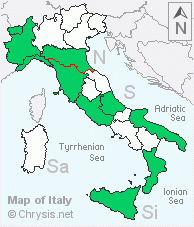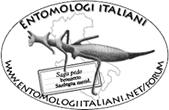The species report is structured in the following sections.
Images
Image(s) = picture of a typical adult specimen
(= habitus) and/or picture of a typical adult specimen in
nature.
Chorology = the map of the geographic distribution of the
species.
Map of Italy = the distribution
map of Italy, subdivided in its administrative regions, colored on the base of
the presence/absence of the species according to personal and bibliographical
data (see also the Italian
distribution detail).
Icons = links to external sites to search for the given
species, among forums (Chrysis.net, Forum Entomologi italiani, HymIS), other
textual resources (Google, Yandex) or images (Google Images, Flickr) and videos
(YouTube).
Systematic position
Subfamily & Tribe = systematic categories. The Subfamily is
a systematic category inferior to the Family (Chrysididae), including a
group of Tribes and Genera. The latin termination is -inae and requires
the capital letter. Example: Chrysidinae. The Tribe is
a systematic category inferior to the Subfamily (Chrysidinae),
including a group of Genera. The latin termination is -ini and requires
the capital letter. Example: Chrysidini.
Genus & species = systematic categories.
The Genus is a systematic category inferior to the Tribe,
including a group of closely related species. It's the first name of the
binomial (Genus and species) or trinomial (Genus and species and subspecies)
nomenclature introduced by Carolus Linnaeus in 18th century. It requires the
capital letter. It doesn't have a latin termination, but it's a latinized name.
Example: Chrysis, Elampus, Stilbum. The species is
a population of organisms whose members share a same series of morphologic
characters and are able to reproduce in nature only among themselves and produce
fertile offspring. The concept of species was established by Ernst Mayr in 1940.
The species is the fundamental category of the whole taxonomical hierarchy and
indicates the limit of the organisms able to reproduce. It is always written
with the low case. The species name, Latin or latinized, should match with the
Genus name. The subspecies is a systematic category inferior to
the species, indicating a group of organisms geographically isolated from the
other populations of the species and showing sometimes morphologic differences,
but anyway able to reproduce with the other specimens of the species when the
subspecific populations come to contact. Author and year indicate
the Author who firstly described the species through a paper published in a
given year.
Species group = it's a sub-aggregate of a Genus, including a
limited assemblage of closely associated species. It's sometimes used instead of
the Subgenus level.
Original combination = it's the way the species or the
subspecies was originally described by its Author, who decided to refer it to a
Genus (or a higher class) not necessarily conserved according to actual
interpretations.
Type series = lists the typical specimens (holotypus, allotypus,
paratypes, etc.) and the placement of the typical specimens in public (Mus. =
Museum) or private (Coll.) collections.
Original description = it's the text of the original description
of the species/subspecies from the Author, according to the original
publication.
Synonyms and subspecies = one or more names which have been
given to the same species by other Authors in time; the earliest name takes
generally priority.
Systematic notes = observations and comments on the systematics
of the taxon.
Size (mm) = size of the adult, in millimeters.
Geographic distribution
World distribution
Type locality = the location indicated for the typical series in
the original description.
Kimsey & Bohart = the locations indicated in: Kimsey L.S. &
Bohart R., 1991 - The Chrysidid wasps of the World. Oxford Press, 652 pp.
Linsenmaier = the locations indicated by Linsenmaier (various
years).
Other Authors = the locations indicated by other valued Authors.
Chorology = the known geographic distribution of the species,
described by a distribution pattern called chorological category. Examples:
W-Mediterranean distribution, Oriental distribution, etc. At present time a
chorologic classification of the Italian Chrysidids doesn't exist. Our suggestion is
based on the species listed by Rosa (2002, 2005, 2006).
Distribution notes = observations and comments on the world
distribution.
Italian distribution according to the Checklist of the species of the
Italian Fauna
The
Checklist delle specie della fauna italiana reports the presence of the
species in four italian macro-regions (
North,
South,
Sicily
and
Sardinia), as decided by the Italian Checklist Commission.
References:
(1) Strumia F., 1995 - Hymenoptera Chrysididae. In: Minelli A, Ruffo
S., La Posta S (eds). Checklist delle specie della fauna italiana, 99. Calderini,
Bologna.
(2) Strumia F., 2001 - Hymenoptera Chrysididae. Aggiornamento alla
Checklist delle specie della fauna italiana. Boll. Soc. entomol. ital., 133 (I):
88-92.
(3) Strumia F., 2005 - Hymenoptera Chrysididae. In: Ruffo S. &
Stoch F. (eds.), Checklist e distribuzione della fauna italiana. 10.000 specie
terrestri e della acque interne. Memorie del Museo Civico di Storia Naturale di
Verona, II Serie. Sezione Scienze della Vita 16: 269-270 + CD-ROM.
Endemism = the term is used here to indicate that the species lives
only in Italy or in a specifica region/area of Italy.
Italian distribution by Administrative Region (Literature records, Personal
evidences and other sources)
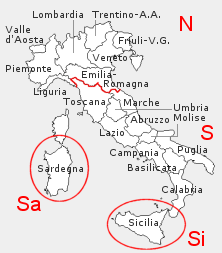
Here you find the presence/absence of the species in
the different Administrative Regions of Italy (from North to South):
Piemonte,
Valle d'Aosta, Lombardia, Trentino A.A., Veneto, Friuli V.G., Liguria, Emilia
Romagna, Toscana, Umbria, Marche, Lazio, Abruzzo, Molise, Campania, Puglia,
Basilicata, Calabria, Sicilia, Sardegna, including the following smaller
islands:
- Toscana: Gorgona, Capraia, Elba, Pianosa,
Giglio, Montecristo, Giannutri.
- Lazio: Ponza, Ventotene, Palmarola.
- Campania: Ischia, Procida, Capri.
- Puglia: San Domino, Caprara, San Nicola.
- Sicilia: Is. Eolie (Stromboli, Panarea,
Alicudi, Filicudi, Salina, Lipari, Vulcano), Is. Egadi (Marettimo,
Favignana, Levanzo), Ustica, Pantelleria, Lampedusa.
- Sardegna: Arcip. La Maddalena, Tavolara,
Asinara, San Pietro, Sant'Antioco.
The columns for presence/absence report the data drawn from:
- the Literature (Literature records)
- the website Forum Entomologi Italiani (FEI records)
- private collections (Personal records)
FEI and Personal records may contain unpublished data.
Distribution notes = observations and comments on the Italian
distribution.
Biology
Known Hosts
Polyphagous = if the species is a parasite of more than one
systematic group (i.e. Sphecids + Vespids).
[Family] = the Family of insects parasitized by the species and
sharing the same environment. Data drawn from the literature show the
bibliographical references in brackets.
Notes on Hosts = unpublished notes about the hosts.
Known Habitat
Habitat = the environmental features known for the species, i.e.
known plants and microhabitats. Data drawn from the literature show the
bibliographical references in brackets.
Plants for rest/refuge = the flowers and plants used by the species
for rest and or for refuge. Data drawn from the literature show the bibliographical
references in brackets.
Parasites = the parasites of the species. Data drawn from the
literature show the bibliographical references in brackets.
Biological notes = observations and comments drawed from personal
field observations.

 (Mus.: Copenhagen)
(Mus.: Copenhagen) ).
). ). Lectotypus (
). Lectotypus ( ) (desig. Móczár , 1997, 35): France: Vernet (Paris).
) (desig. Móczár , 1997, 35): France: Vernet (Paris). . Lectotypus (desig. Móczár 1962: 119); Szolloske (Budapest).
. Lectotypus (desig. Móczár 1962: 119); Szolloske (Budapest).
 , 2
, 2 
 . Lectotypus
. Lectotypus  ; Georgia (St. Petersburg).
; Georgia (St. Petersburg). . Holotypus
. Holotypus  ; Iran: Astrabad (according to Kimsey & Bohart, 1990: 60) (St. Petersburg).
; Iran: Astrabad (according to Kimsey & Bohart, 1990: 60) (St. Petersburg).



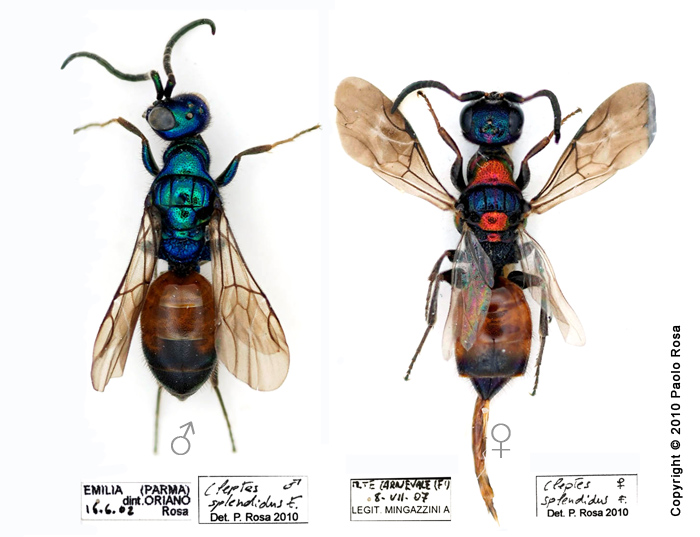
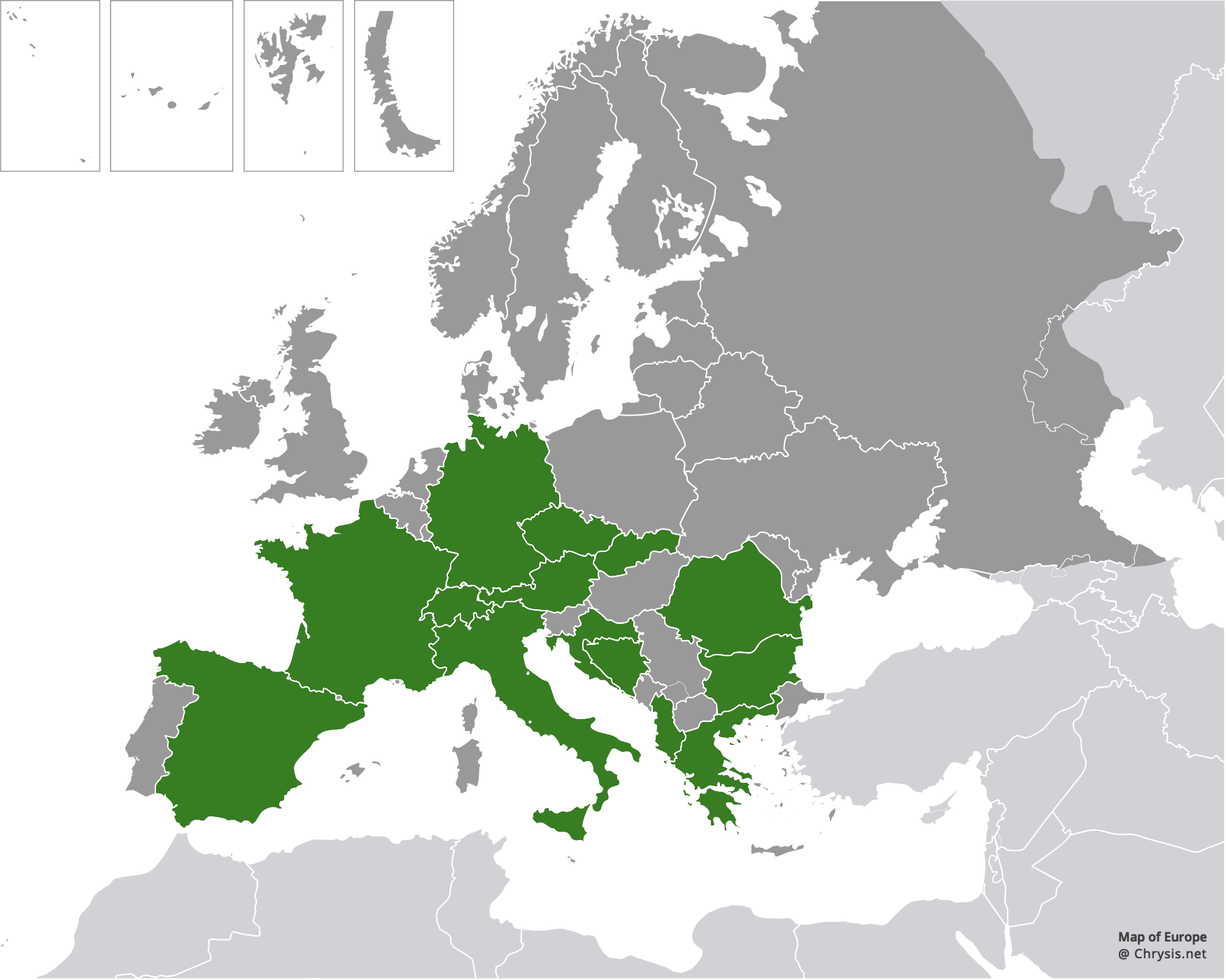
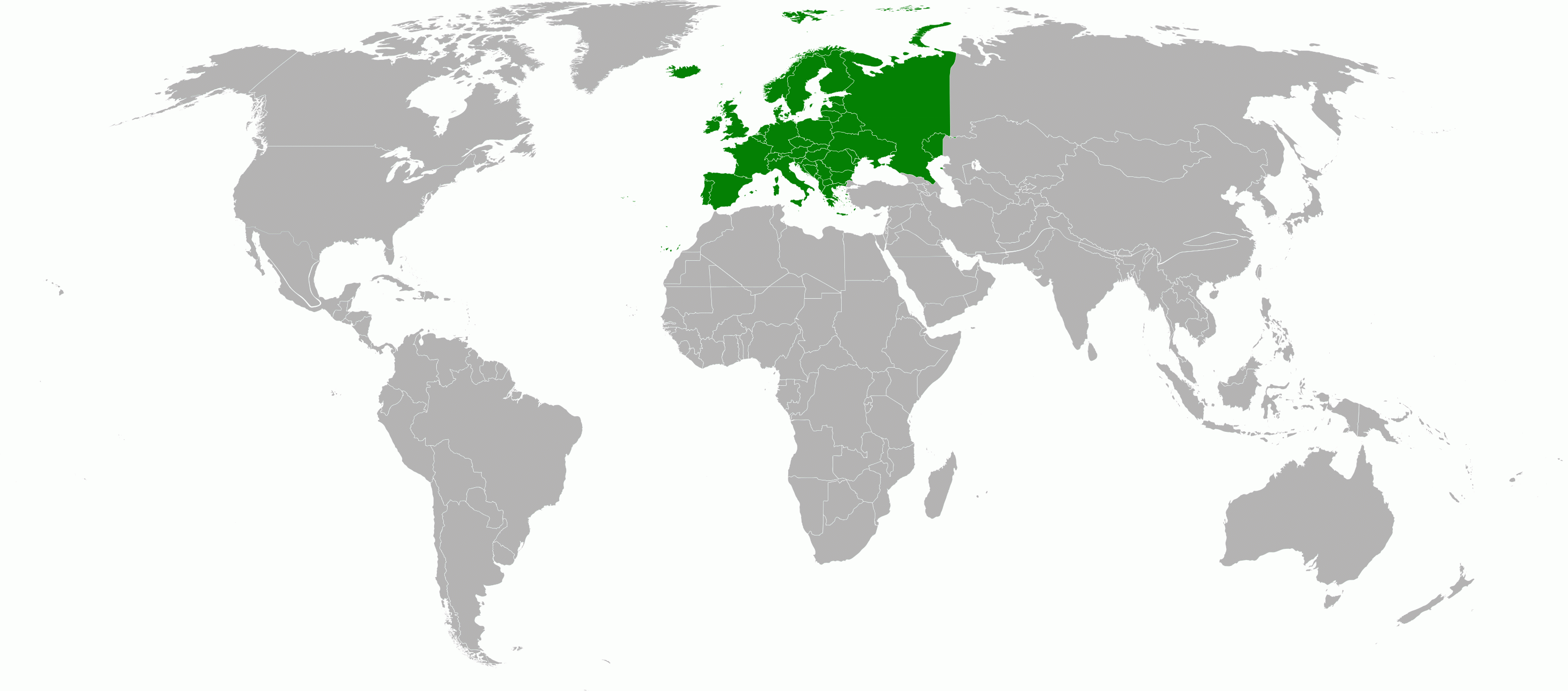
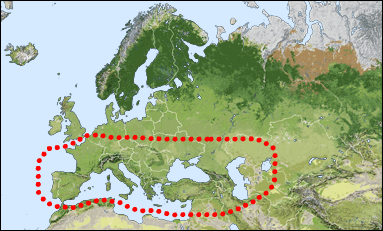
 Here you find the presence/absence of the species in
the different Administrative Regions of Italy (from North to South): Piemonte,
Valle d'Aosta, Lombardia, Trentino A.A., Veneto, Friuli V.G., Liguria, Emilia
Romagna, Toscana, Umbria, Marche, Lazio, Abruzzo, Molise, Campania, Puglia,
Basilicata, Calabria, Sicilia, Sardegna, including the following smaller
islands:
Here you find the presence/absence of the species in
the different Administrative Regions of Italy (from North to South): Piemonte,
Valle d'Aosta, Lombardia, Trentino A.A., Veneto, Friuli V.G., Liguria, Emilia
Romagna, Toscana, Umbria, Marche, Lazio, Abruzzo, Molise, Campania, Puglia,
Basilicata, Calabria, Sicilia, Sardegna, including the following smaller
islands:
